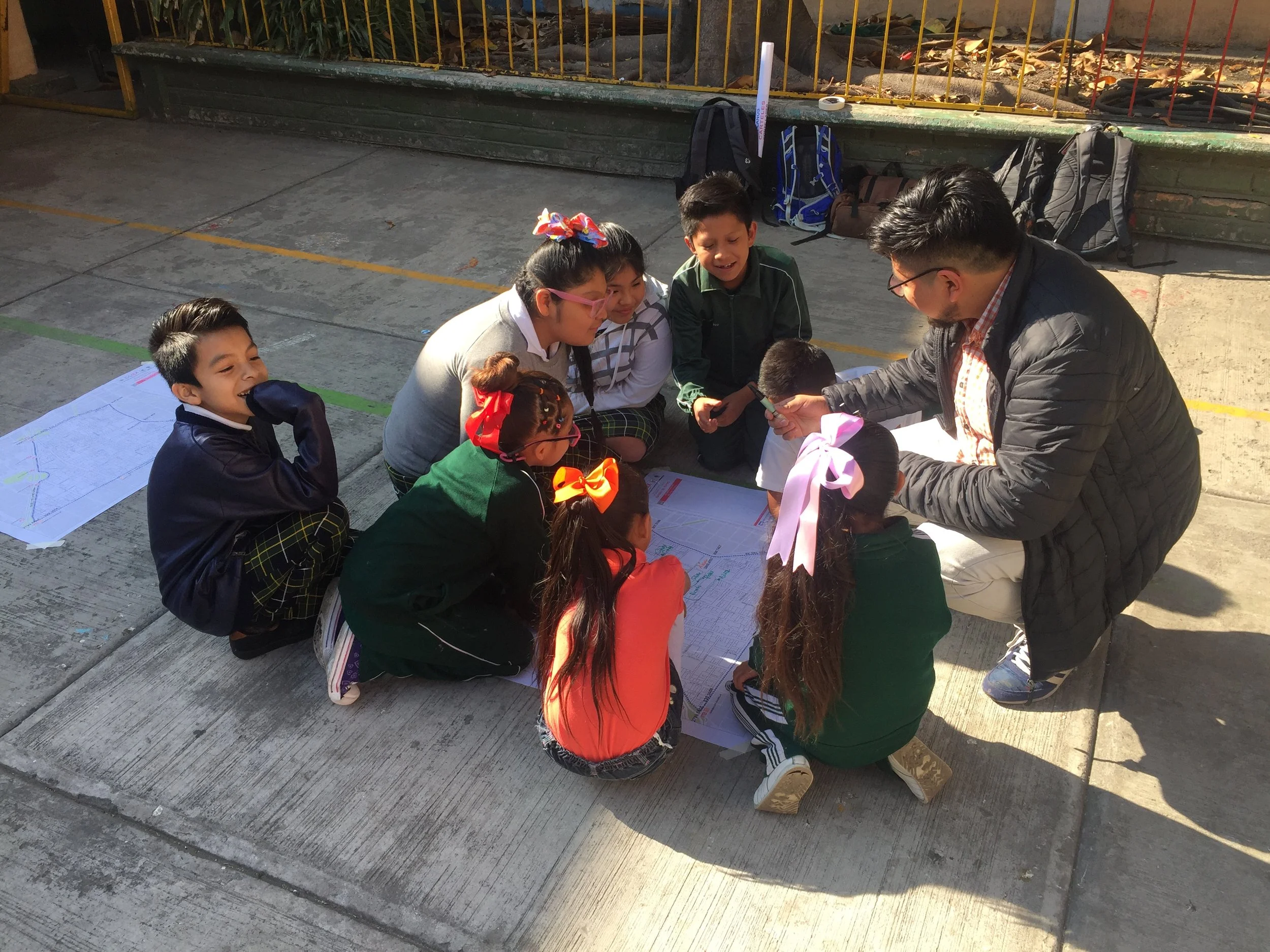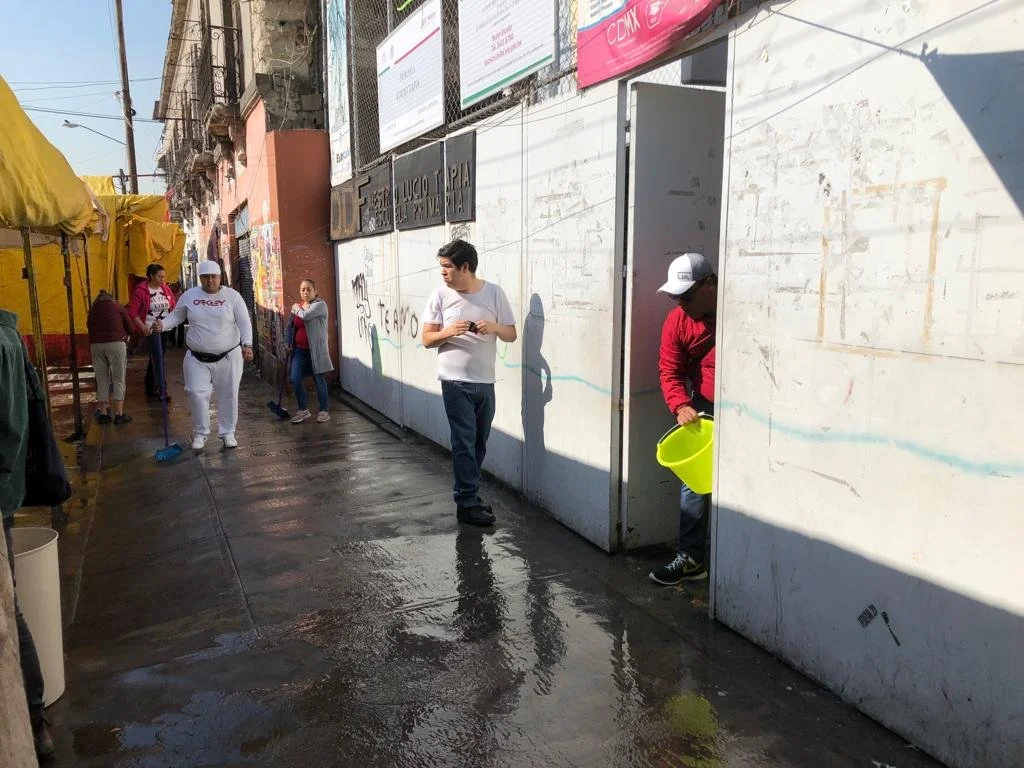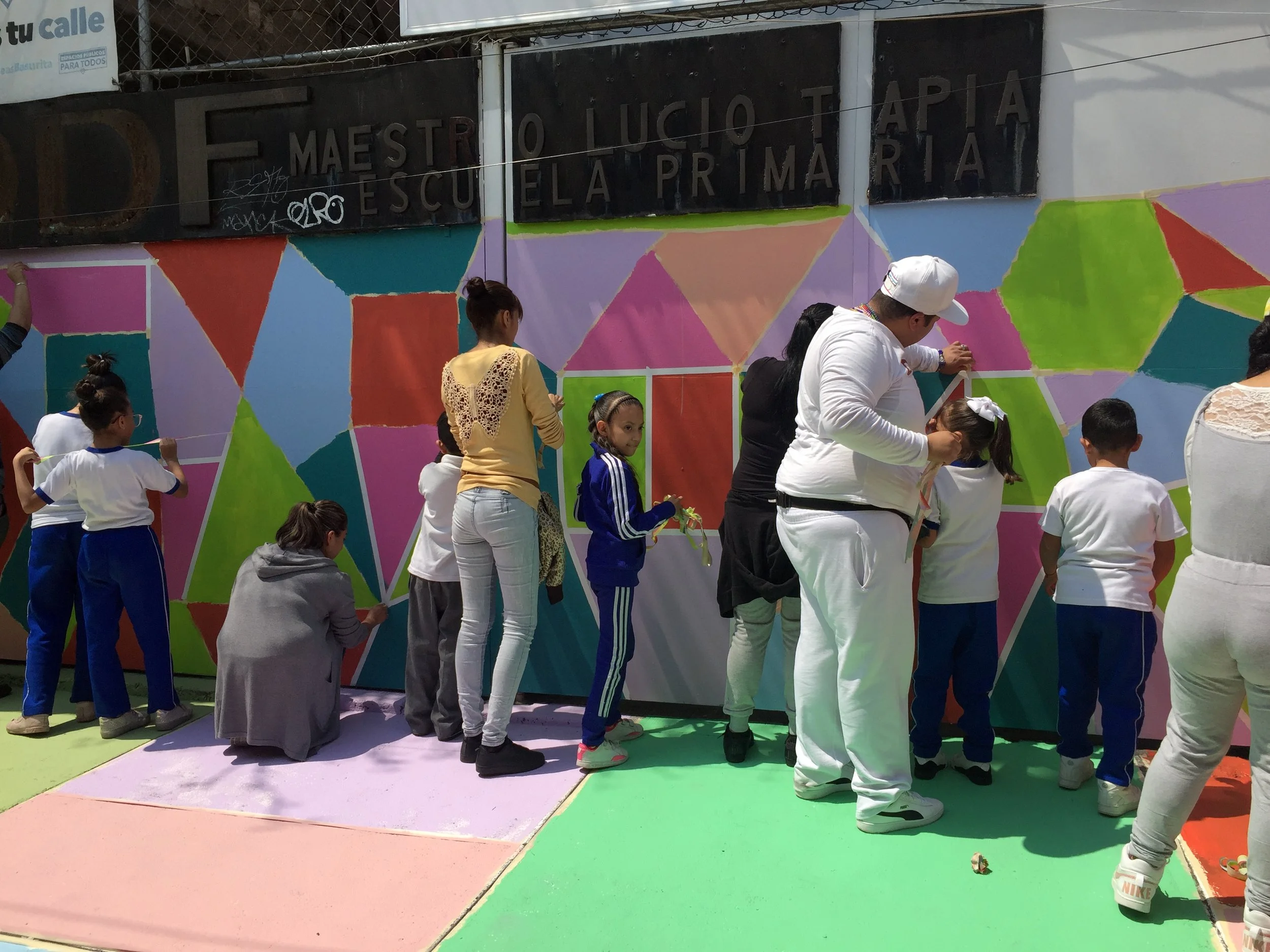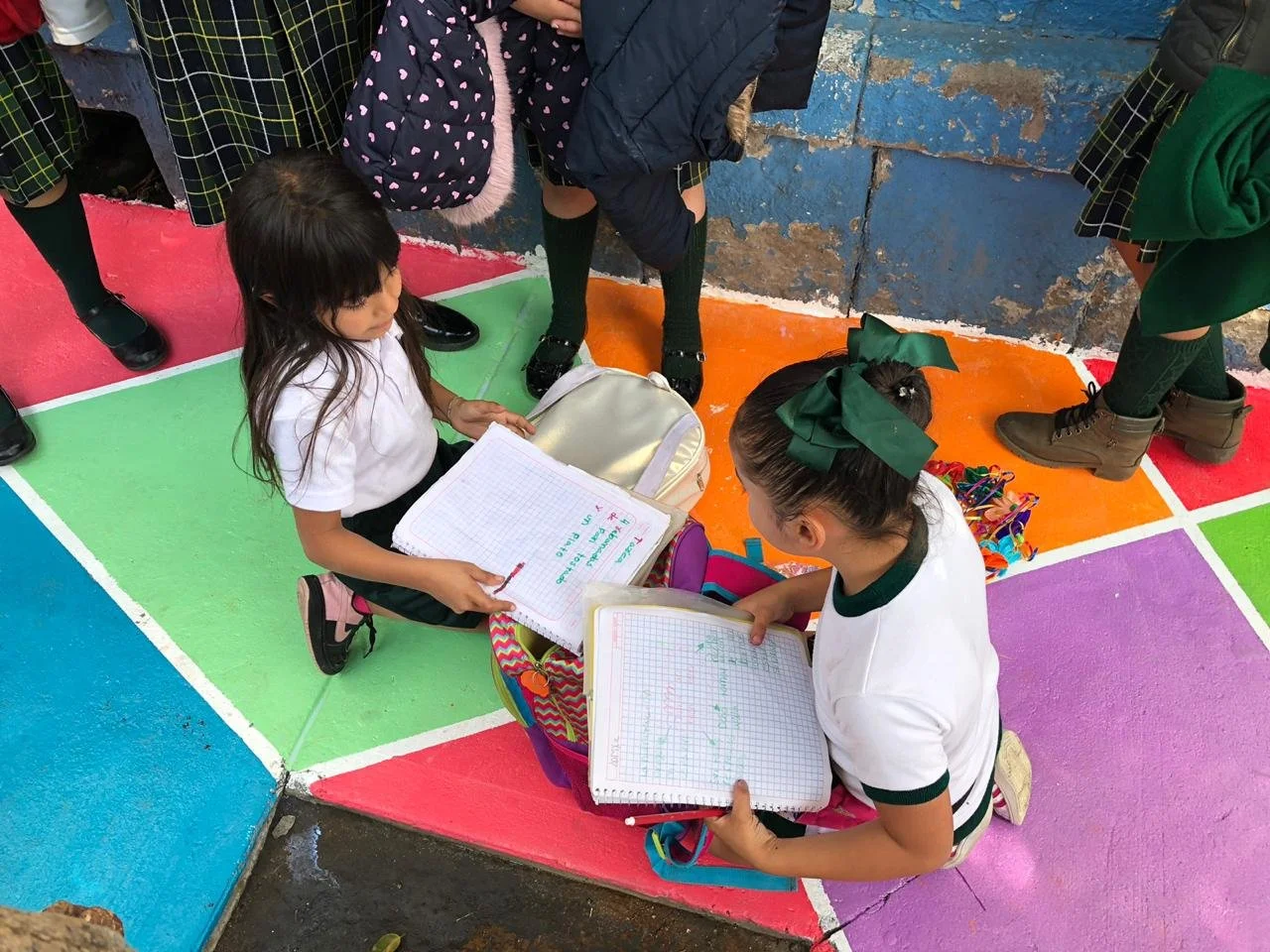Mi Escuela, Mi Barrio: Children take back their neighborhood
Project Type: Urban intervention
My Role: Participatory Urban Designer
Methods: Contextual inquiry, field study, interviews, participatory design workshops, communal mapping
Location: Tepito, Mexico City
Institutions: Placemaking Mexico (NGO)
Duration: 2019
proJect DeScription
Mi Escuela, Mi Barrio (My School, My Neighborhood) gave children the tools to take back the streets near their schools and homes in Tepito, Mexico City. The project consisted of:
Mapping experiences of the neighborhood with children to understand their perceptions of safety
Painting days to transform the sidewalks outside of 11 elementary schools
The work was the first step in a larger master plan for the neighborhood. Each mapping and painting exercise lasted a day and served as a tool to get children and the neighborhood involved in the creation of the master plan.
Key questions
How can we understand the experience of children using the streets?
How can we empower children to use the streets in their neighborhood?
How can we work across the community to create safer streets for children?
The project was presented at the 3rd International Placemaking Week (2019) in Chattanooga, TN.
More information can be found here.
Project photos






Learnings
Short term interventions for long term design: Short term placemaking activities–such as painting the streets–are only as strong as the follow up. It is critical that tactical urbanism projects, which create hope in a community, are a first step in longer lasting interventions.
Exclusion for inclusion: While the ideal is that all relevant actors are involved in an urban intervention, in some cases I would not recommend this. For example, in this project actors we intentionally excluded from the process to create safe spaces for children included police and members of organized crime, both of whom are in large part the creators of the dynamics that prevent children from accessing public space. The intervention spoke louder than words, and showing the value through doing in this case was sufficient to convince excluded actors (police, organized crime) that it was worthwhile. Put another we, we prioritized the inclusion of the most vulnerable actors.



